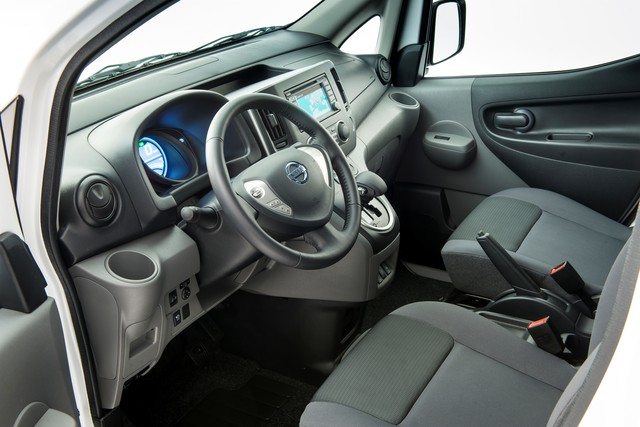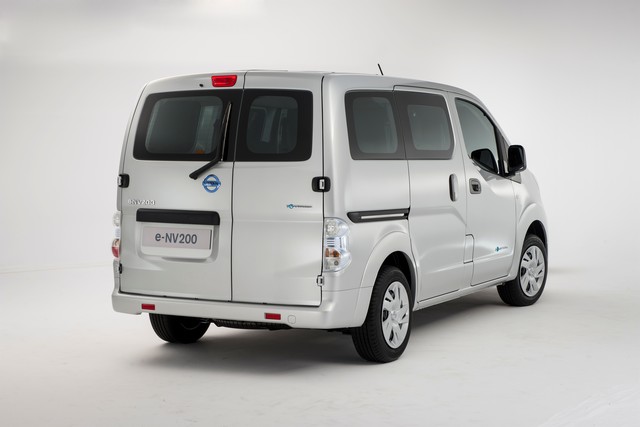The basis of the e-NV200 Combi is Nissan's medium-sized NV200 van. The "Combi" part of the name is applied to models which have been converted into MPVs, with five or seven seats and extra windows. "e" stands for electricity and refers to the fact that these versions use the electric motor and battery pack also found in the Leaf hatchback in place of a diesel engine.
The battery pack leaves no room for a third row of seats, so the e can take no more than four passengers along with the driver, though its van heritage means there's a great deal of space (up to 4,200 litres) for luggage and what not. The shape of the rear side windows is dictated by the door pressings, and these seem to have been designed before anyone thought of making an MPV conversion.
Those windows are on the small side, and since they're also tinted, the back of Combi can be a dark place to sit in dull weather. Access is good, though, since the Combi has sliding doors rather than hinged ones.
For obvious reasons, the NV200 feels more like a van than a car from the driver's seat, but as with all electric vehicles it's quiet, moves away from rest very smoothly and is very easy to operate. The ride is okay, though the front-end can be a bit bouncy. If it's any consolation, the e-NV200 van is slightly worse in this respect.

With a maximum power output of 108bhp and a kerb weight of well over two tonnes, the e-NV200 isn't much of a performer. Zero to 62mph takes 14 seconds and the top speed is 76mph, so you have to drive nearly flat-out on motorways simply to stay at the legal speed limit. Urban and light country use are much more suitable.
You wouldn't in any case want to stray too far from home, since the official range is 106 miles, and you'd be hard pressed to match that in everyday driving.
It should be apparent from the above that the use of the word Rapid in the name should not be taken to mean that this is a quick car. It actually refers to the rapid charging system which allows you, if you have a suitable supply, to replenish the battery in four hours rather than the eight it would take if you simply plugged the car into the mains. It's a £1,270 plus VAT optional extra on the Acenta, but standard on the Tekna.
The Rapid Plus also has a fast charging system (available on lesser models for a further £555 plus VAT). With this, you can get the battery to an 80% charge in half an hour, though for technical reasons, it takes about the same time again to reach 100%.
Standard equipment on this version also includes alloy wheels, cruise control, automatic headlights and wipers, a height-adjustable driver's seat, a floor protector, Bluetooth phone preparation, a reversing camera, a full-sized spare wheel and four audio speakers (the Acenta has just two).

The list price is £31,309, or £26,309 after the Government's plug-in vehicle grant has been applied.
That's assuming you buy the whole car outright. Another option is to save
£3,004 on the after-grant figure by leasing the battery pack. There are twelve cost options here, ranging from £61 per month if you promise to stay signed up for 36 months and drive no more than 6,000 miles each year to £106 per month if you go for a one-year deal and put 15,000 miles on the clock during that year, which you probably won't.
Optional extras not mentioned so far (and once again excluding VAT) include satellite navigation for £500, sliding rear window units for £90 and a Cold Pack consisting of heated front seats, steering wheel and door mirrors (the latter also being electrically adjustable) for a very reasonable £130.



